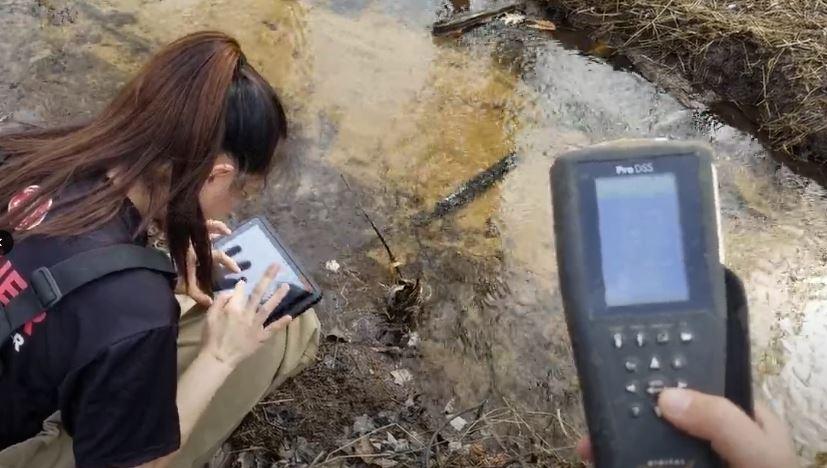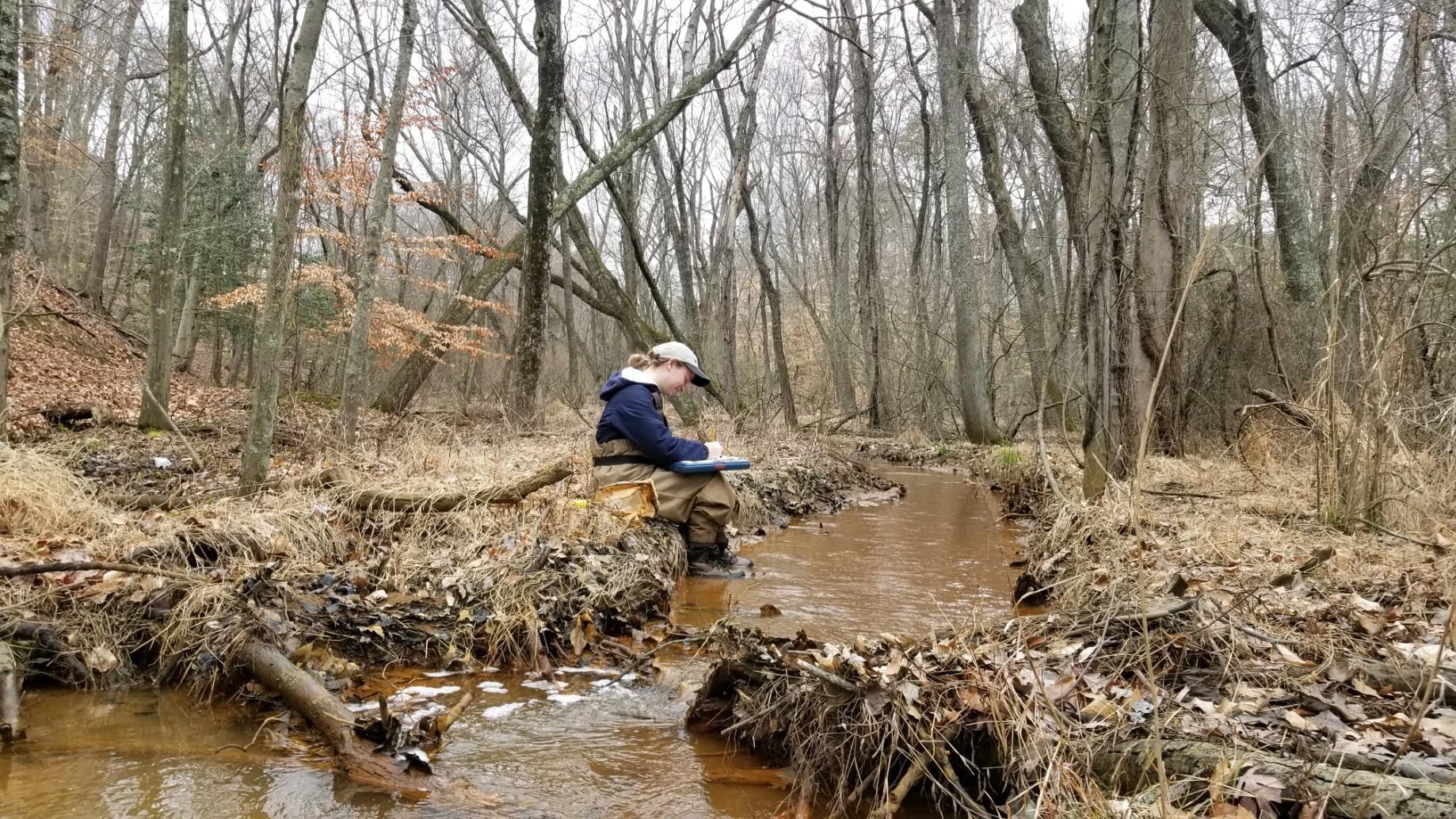Currently, the program maintains one long-term automated monitoring station at Cowhide Branch, a tributary to Weems Creek, where continuous stream flow is recorded, storm events are automatically sampled, and baseflow water quality data are collected monthly. A second long-term monitoring station will come back online in 2023 to collect post-restoration water quality data from Furnace Branch. Data collected from these monitoring stations, prior to stream restoration, established the water quality baseline.
Additional water quality monitoring projects that support regulatory requirements include the NPDES MS4 Permit required for polychlorinated biphenyl (PCB) source tracking monitoring and Marley/Furnace Creek bacteria monitoring. TMDLs specific to PCBs were issued for the Baltimore Harbor and Curtis Creek/Bay and the Tidal Fresh Patuxent River in October 2012 and September 2017, respectively. To identify the PCB sources, the County established a working relationship with MDE and UMBC to pursue baseline PCB sampling and is now implementing a “trackback” water quality sampling project to better define the potential source(s) of the PCBs.
EPA approved a bacteria TMDL for Marley and Furnace Creeks in 2010. In compliance with MDE and EPA regulatory guidelines, Anne Arundel County developed a TMDL Restoration Plan that included restoration strategies for the Marley and Furnace Creek watersheds along with other bacteria-impaired watersheds. To measure progress toward achieving the TMDL, Anne Arundel County initiated a 3-Year bacteria trend monitoring program for enterococci in the Marley and Furnace Creek watersheds in 2019. Twelve monitoring stations are sampled monthly, six in each watershed, to identify trends, correlate with potential sources, and identify seasonal variations. Along with quantitative data, anecdotal observations at each sampling location are recorded. A multi-year summary report is available on the Biological Monitoring page.
Also included in this program are special studies of interest. Among those is the Sawmill Creek watershed study where water temperature and conductivity were collected over a five-year period to help the County better understand how this urban stream system supports a healthier-than-expected aquatic biological insect community. The data collection period concluded in late 2021, analyses is proceeding now, and the report will be available on the Publications page in early 2023.
Another special water quality study that was born out of our Countywide Biological Monitoring Program, is the Nutrient Hotspot Identification Project. This project, which will begin in 2023, focuses on water quality data from grab samples collected each spring at over 40 random stream monitoring sites in the County. These water quality data are assessed, using ecological and other criteria, to determine if elevated nutrients (nitrogen, phosphorus) concentrations are present. If concentrations are above the established thresholds, additional sampling will occur to confirm the initial data and, as appropriate, to identify and remedy any potential sources.


